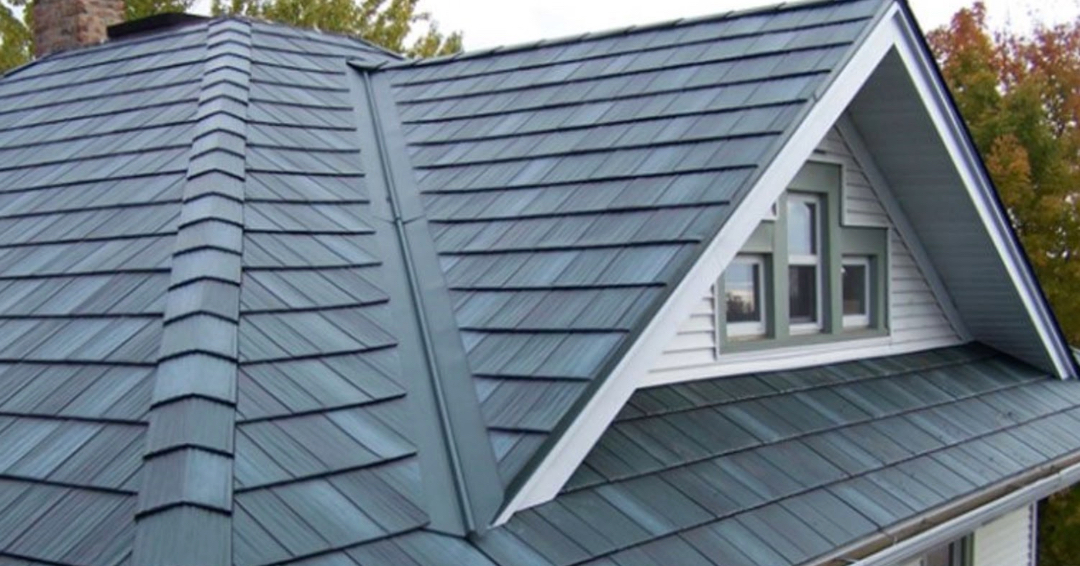Shingles have a long history in Canadian roofing, especially on Vancouver Island, where constant rain and high humidity are the norm. Asphalt shingles have been the top pick for decades, they’re affordable, fairly easy to install, and last long enough for most. They’re also tough enough to handle cold and storms, and they come in various styles to give homes a clean look. Over time, asphalt shingles have almost become a standard for Vancouver Island homes.
Nevertheless, shingles, especially asphalt, aren’t perfect. The wet climate causes them to wear out faster than in drier areas, leading to issues like moss, algae, and curling over time. These problems go beyond appearance; they affect how well the roof protects the home. Moss can trap moisture, increasing the chance of leaks, while curling shingles are more likely to break in strong winds, making the home vulnerable during storms.
 Challenges with Traditional Shingles
Challenges with Traditional Shingles
In places like Vancouver Island, constant rain challenges even the best roofing materials. Traditional asphalt shingles, while affordable, aren’t built for such moisture-rich conditions; algae and moss growth are common, reducing their effectiveness and appearance. After about a decade, they often show signs of aging, like brittleness and curling, leading to leaks. This means homeowners face ongoing maintenance and repair costs to keep their homes protected and looking good.
Next-Gen Shingle Options
Recognizing these issues, roofing companies have developed new shingles aimed at better durability, lower maintenance, and even energy savings. Some newer shingles are treated with copper granules to prevent algae buildup, keeping roofs clean and reducing the need for regular scrubbing, a huge plus for the humid climate here.

Impact-resistant shingles are another option, designed to handle not only rain but also the high winds and occasional hail that places like Vancouver Island experience. Reinforced with polymer or modified asphalt, these shingles stand up better against extreme weather, meaning fewer repairs after stormy seasons.

Cool roof shingles, on the other hand, are designed to reflect more sunlight and lower heat absorption. Although places like Vancouver Island have mild temperatures, these shingles can still help cut down on energy costs during the warmer days, making them a more eco-friendly option.

Synthetic shingles are also making waves. Made from engineered materials, they can look like traditional shingles or even slate, with the bonus of high durability and moisture resistance. They’re lighter on the roof and often come with long warranties, which is peace of mind for homeowners. Though synthetic shingles cost more upfront, they make up for it by lasting longer and needing fewer repairs—ideal for Vancouver Island’s wet climate.
Shingle Comparison Overview
| Feature | Traditional Asphalt Shingles | Algae-Resistant Shingles | Impact-Resistant Shingles | Cool Roof Shingles | Synthetic Shingles |
|---|---|---|---|---|---|
| Durability | 15-20 years, but moisture can reduce lifespan | Similar to traditional, with added algae protection | Withstands severe weather; longer lifespan in storm-prone areas | Reflects sunlight; durability varies by product | Highly durable; often lasts 30-50 years |
| Algae & Moss Resistance | Prone to algae and moss in humid climates | Copper or zinc granules inhibit algae growth | Standard resistance | Standard resistance, some algae-resistant options | Often naturally resistant to algae and mould |
| Weather Resilience | May suffer damage from wind and heavy rain | Similar to traditional; primary algae protection | Rated for high impact resistance (e.g., hail) | Reflective properties reduce expansion, not impact-focused | Very high resistance to weather and impact |
| Energy Efficiency | Absorbs heat, increasing cooling costs | Similar to traditional; varies with colour | Comparable to traditional | Reflective materials help lower cooling costs | Moderate; varies by material composition |
| Aesthetic Longevity | Color fades, granules lost over time | Maintains appearance longer by resisting algae | Retains look by resisting impact damage | Reduces heat-related aging; colour variety available | Retains colour and structure well over time |
| Environmental Impact | Frequent replacements increase waste | Less waste; longer appearance retention | Less frequent replacement; reduces environmental impact | Energy savings, some recyclable options | Long lifespan reduces waste; often recyclable |
| Cost | $1.00 to $1.50 per sq ft | Slightly higher for algae-resistant features | 10-20% higher than standard shingles | Higher upfront; energy savings may offset cost | Higher upfront but lower lifetime costs |
| Warranty | Basic 20-25 years | 25-30 years, extended for algae resistance | Covers impact damage, varies by manufacturer | Often covers reflective performance, terms vary | Extended warranties (often 30-50 years) |
| Maintenance | Regular cleaning for algae, and moss | Less cleaning needed | Low maintenance, impact-resistant | Minimal maintenance, inspections still recommended | Very low maintenance, durable against elements |
Investment Considerations
When deciding whether to replace existing shingles with newer technology, Vancouver Island homeowners should consider:
- Algae-Resistant Shingles: If your roof is prone to algae growth due to the island’s humid climate, algae-resistant shingles can help maintain your roof’s appearance and reduce maintenance needs.
- Impact-Resistant Shingles: For areas with severe weather conditions like high winds or hail, impact-resistant shingles provide extra protection, potentially extending your roof’s lifespan and reducing repair costs.
- Cool Roof Shingles: Although Vancouver Island’s climate is mild, cool roof shingles can improve energy efficiency by reflecting sunlight, potentially lowering cooling costs during warmer months.
Since each homeowner’s situation is unique, assessing specific needs, climate conditions, and budget constraints is essential. For a tailored recommendation, consider reaching out to an expert like us to evaluate your roof and determine the best option for your home.


